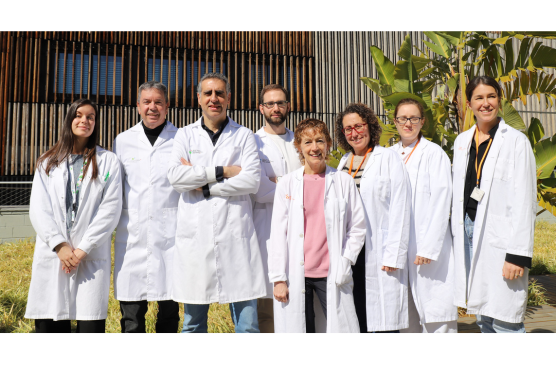Researchers from the Josep Carreras Leukaemia Research Institute have demonstrated the presence of chromosome instability in childhood B-cell acute lymphoblastic leukaemia for the first time. This is a feature known to play an important role in cancer progression and very much related to the patient’s overall survival. The identification of cellular adaptations to cope with its related genetic defects, especially in the cell division’s machinery, may open the door to new strategies against the disease.
The research, published recently at the top journal EMBO molecular medicine, involved researchers from the Menéndez Lab at the Josep Carreras Institute and other Spanish institutions like the Hospital Clínic, Sant Joan de Déu, Hospital Virgen de la Arrixaca and Castilla-La Mancha University, as well as groups from The Netherlands, France, Italy and The Unites States. It was coordinated by Dr. Oscar Molina, an emerging scientist at the Josep Carreras Institute.
When it comes to chromosomes, too many or too few is double trouble. Every human cell has its own set of 46 chromosomes, spanning the whole genetic information it needs to live and behave properly within its tissue.
The delicate balance between the 20 thousand genes lying in those 46 chromosomes is so important, that even modest gains or losses may result in disease. Cancer cells are known to display a wide range of chromosome number abnormalities, usually generated by Chromosome Instability (CIN).
During its proliferation frenzy, cancer cells lose control over their chromosomes and tend to lose or gain some, leaving cells with aberrant numbers other than the regular 46. They are called aneuploid cells by scientists and it’s one of the known Hallmarks of Cancer. Even though CIN is a common trait in cancer, little was known about it in the framework of childhood B-cell acute lymphoblastic leukaemia (cB-ALL), the most common paediatric cancer showing high frequencies of aneuploidy.
Understanding whether this aneuploidy is associated with ongoing CIN, and if this has anything to do with the future progression of the disease in terms of overall survival, could give clinicians new tools to treat patients in the future. The downside is that determining CIN in leukaemic cells is a tricky thing, because these cells refuse to expand outside the body, reducing the range of experiments the researchers can do. Using state-of-the-art single cell whole genome sequencing, Dr. Molina’s team proved that there is indeed CIN in primary samples coming from patients, and that CIN was higher in aneuploid cells compared to chromosomally normal ones.
In fact, the higher values of CIN were observed in the group of patients with the worst outcomes of the disease due to its capacity to live longer and, often, resist anticancer drugs. However, this was just a static picture and the team wanted to understand the dynamics of CIN in cB-ALL. That’s why they decided to implant leukaemic cells into a very special kind of mice, to reproduce the disease and study it as if it were on human patients.
The results confirmed CIN in aneuploid cB-ALL cells growing on mice and revealed that the tumours developed in such a way that only those that kept CIN under reasonable boundaries were able to survive and develop the disease. A mathematical model of cancer progression supported the findings and offered further hypothesis on how these boundaries could be established in cancer cells.
Too many alterations make the cell unable to live, usually triggering its own self destruction program. A proteomic analysis of the different cell populations within the tumour showed that those surviving had a specific set of protecting alterations in the cell division machinery that would make them insensitive to mild chromosome number changes, letting them live longer and keep up with the disease while resisting anticancer treatments, commonly attacking chromosome segregation.
Overall, the identification of CIN in cB-ALL leukaemia and understanding how it relates with overall survival is a key finding that will be instrumental in the future to assess the risk of a patient and, therefore, his/her therapeutical pathway.
Also, the misfunctions found in the cell division machinery open the door to finding new therapeutical targets and developing a new set of anticancer drugs to avoid cell adaptation to genome instability and, eventually, die.
The research has been funded, among others, by the Josep Carreras Foundation, Obra Social La Caixa, the Spanish Ministry of Economy and Competitiveness/European Union NextGenerationEU and a personal grant from the Spanish Association Against Cancer to Dr. Molina.







